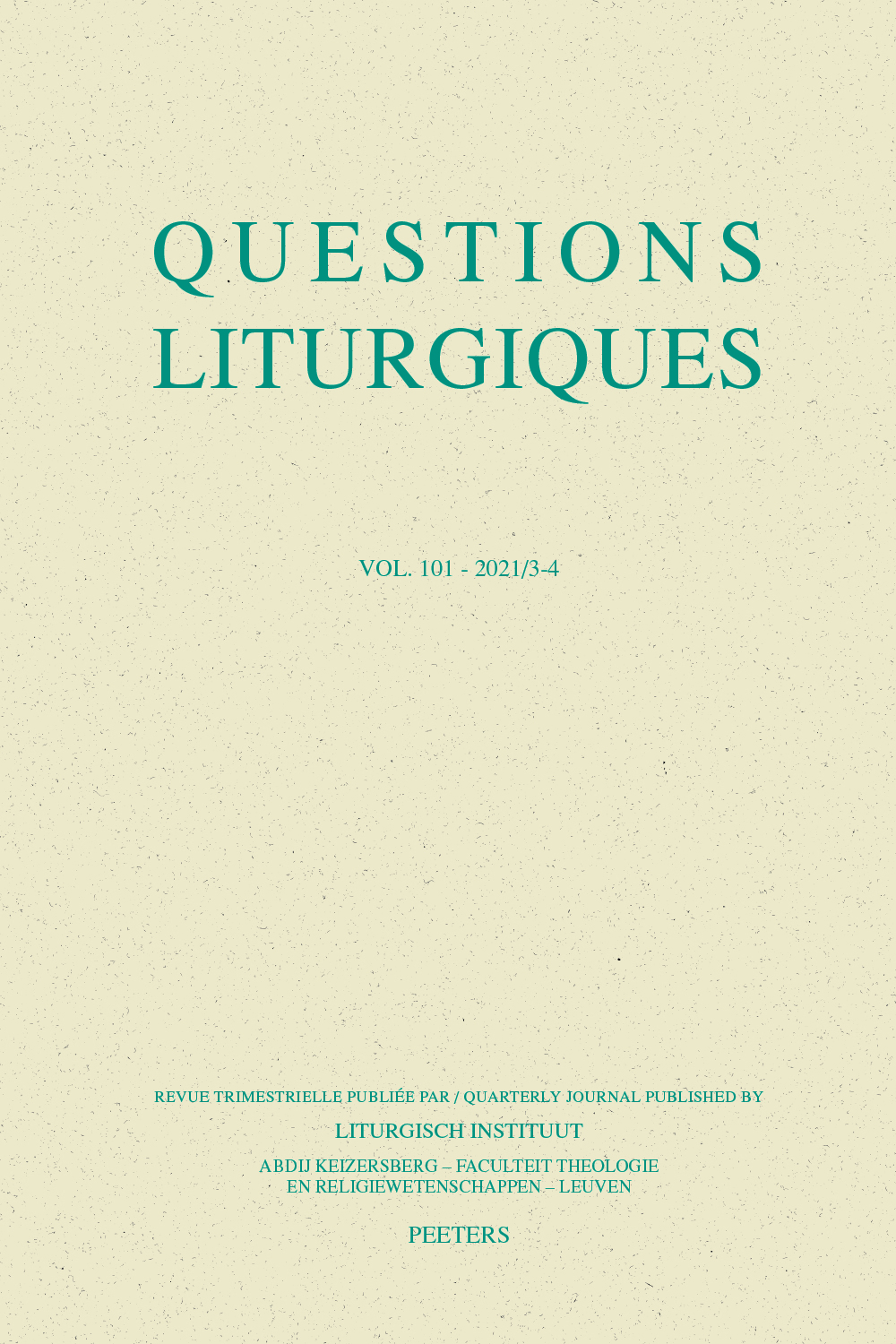next article in this issue  |

Preview first page |
Document Details : Title: L'année liturgique, un autre regard sur le temps Author(s): BRICOUT, Hélène Journal: Questions Liturgiques/Studies in Liturgy Volume: 97 Issue: 1-2 Date: 2016 Pages: 3-19 DOI: 10.2143/QL.97.1.3154572 Abstract : Dans le contexte socio-économique actuel marqué par l’accélération du temps et une aliénation multiforme, l’article s’interroge sur les moyens qu’offre la liturgie pour expérimenter un rapport au temps qui construise les personnes de manière durable et fondamentale. La première partie veut montrer, principalement par les ressources de l’euchologie, comment la prière de l’Église nous invite à un juste rapport au temps, comme à toutes les choses créées. Elle nous conduit ainsi à entrer dans une compréhension plus profonde de la condition eschatologique des baptisés. Ce faisant, la liturgie nous renvoie vivre au monde avec d’autres repères que ceux qui en proviennent. La seconde partie rappelle les fondements théologiques de l’année liturgique, qui mettent en évidence son rapport intime au salut: en mettant les fidèles au contact des «réalités d’en haut», la Trinité et l’éternité, l’année liturgique fait du chronos un kairos, un lieu d’expérience de la présence du Christ qui sauve et de l’Esprit qui sanctifie, conformément au dessein du Père. La dernière partie essaie de vérifier comment la liturgie du temps ordinaire propose un lieu de résistance à la déconstruction des sujets, en distribuant jour après jour les vivres dont les croyants ont besoin pour poursuivre leur croissance spirituelle jusqu’à son achèvement. In a socio-economic context characterized by an acceleration of time and a multiform alienation, the present article deals with the means offered by the liturgy to try a relationship with time which builds up persons in a fundamental and lasting way. The first part aims to show how the prayer of the Church invites us to a balanced relation with time, as with every other created thing. It does that primarily through an interpretation of euchological resources. The Church’s prayer leads us to share a more profound understanding of the eschatological condition of the baptized. In doing so, the liturgy sends us back into the world with other resources than the ones emerging from it. The second part reminds one of the theological foundations of the liturgical year, which underscore its intimate connection with salvation. Establishing contact between the faithful and realities ‘from above’ – the Trinity and eternity – the liturgical year turns chronos into kairos, i.e. a place where Christ’s presence and the Spirit’s sanctifying activity can be experienced in agreement with the Father’s plan. The last part attempts at verifying how the liturgy of ordinary time provides a place where the deconstruction of subjects can be resisted by distributing on a daily basis the foods the faithful need in order to pursue their spiritual journey until its completion. |
|


